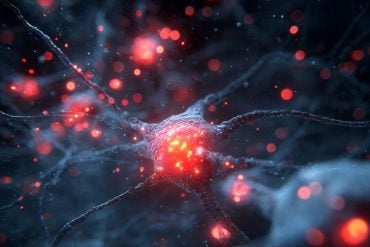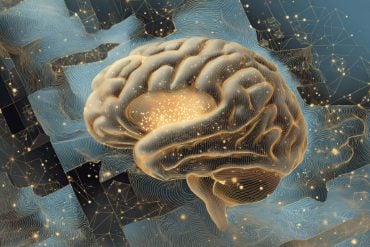Summary: Higher body fat leads to increased atrophy of the brain’s gray matter and a greater risk of cognitive decline, researchers report.
Source: University of South Australia
It’s the global epidemic that affects two in every five adults, but as obesity continues to expand waistlines worldwide, researchers at the University of South Australia are warning that harmful body fat can also increase the risk of dementia and stroke.
Examining grey brain matter of about 28,000 people, the world first research showed that increased body fat incrementally leads to increased atrophy of grey matter in the brain and consequently higher risk of declining brain health.
Grey matter is an essential part of the brain responsible for execution control, muscular and sensory activity as well as learning, attention, and memory.
Obesity is a major issue worldwide, with numbers nearly tripling since 1975. Data from the World Health Organization shows that more than 1.9 billion adults are overweight, with 650 million being obese. More than 340 million children (aged 5-19) are overweight or obese, with 39 million children under the age of five also falling into this category.
Lead researcher, UniSA’s Dr Anwar Mulugeta, says the findings add to the growing issues associated with being overweight or obese.
“Obesity is a genetically complex condition characterised by the excessive body fat,” Dr Mulugeta says.
“Commonly linked to cardiovascular disease, type 2 diabetes, and chronic inflammation (a marker of dementia), obesity currently costs Australia’s economy about $8.6 billion dollars each year.
“While the disease burden of obesity has increased over the past five decades, the complex nature of the disease means that not all obese individuals are metabolically unhealthy, which makes it difficult to pinpoint who is at risk of associated diseases, and who is not.
“Certainly, being overweight generally increases your risk for cardiovascular disease, type 2 diabetes, and low-grade inflammation, but understanding the level of risk is important to better direct supports.
“In this study, we investigated the causal relationships of individuals within three metabolically different obesity types* – unfavourable, neutral and favourable – to establish whether specific weight groups were more at risk than others
“Generally, the three obesity subtypes have a characteristic of higher body mass index, yet, each type varies in terms of body fat and visceral fat distribution, with a different risk of cardiometabolic diseases.
“We found that people with higher levels of obesity especially those with metabolically unfavourable and neutral adiposity subtypes had much lower levels of grey brain matter, indicating that these people may have compromised brain function which needed further investigation.
“However, we did not find conclusive evidence to link a specific obesity subtype with dementia or stroke. Instead, our study suggests the possible role of inflammation and metabolic abnormalities and how they can contribute to obesity and grey matter volume reduction.”

The study used Mendelian randomisation to examine the genetic data of up to 336,000 individual records in the UK Biobank, with self-reported information and linked hospital and death register records to connect dementia and stoke.
It found that middle to elderly age groups (37-73) grey brain matter decreased by 0.3 per cent for every extra 1 kg/m2, which is equivalent of an extra 3 kg of weight for person of average height individuals, (173 cm)
Senior investigator, Professor Elina Hyppönen, Director of UniSA’s Australian Centre for Precision Health based at SAHMRI, says maintaining a healthy weight is important for general public health.
“It is increasingly appreciated that obesity is a complex condition, and that especially excess fat which is located around the internal organs have particularly harmful effects on health,” Professor Hyppönen says.
“Here, we used the individuals’ genetic and metabolic profiles to confirm different types of obesity. In practice, our findings very much support the need to look at the type of obesity when assessing the type of likely health impact.
“Even in a relatively normal weight individual, excess weight around the abdominal area may be a cause of concern.”
About this diet and dementia research news
Source: University of South Australia
Contact: Annabel Mansfield – University of South Australia
Image: The image is in the public domain
Original Research: Closed access.
“Unlocking the causal link of metabolically different adiposity subtypes with brain volumes and the risks of dementia and stroke: A Mendelian randomization study” by Anwar Mulugeta et al. Neurobiology of Aging
Abstract
Unlocking the causal link of metabolically different adiposity subtypes with brain volumes and the risks of dementia and stroke: A Mendelian randomization study
To establish causal evidence for the association of adiposity-related metabolic abnormalities with brain volumes, and the risks of dementia and stroke, we applied 1- and 2-sample Mendelian randomization (MR) analyses using up to 336,309 UK Biobank participants.
We used 3 classes of genetic instruments, which all increase body mass index but are associated with different metabolic profiles (unfavorable, neutral and favorable). We validated the instruments using anthropometric and cardio-metabolic traits.
Both metabolically unfavorable and metabolically neutral adiposity associated with lower gray matter volume (GMV, −9.28 cm3, −12.90 to −5.66 and −12.02 cm3, −20.07 to −3.97, respectively). Metabolically favorable adiposity was tentatively associated with a higher GMV (16.21 cm3, −0.21 to 32.68). No causal evidence was seen for white matter and hippocampal volume, and volume of white matter hyperintensities, or with the risks of dementia and stroke (all p > 0.60).
These findings suggest that obesity-related metabolic abnormalities may contribute to GMV atrophy, warranting further studies.






